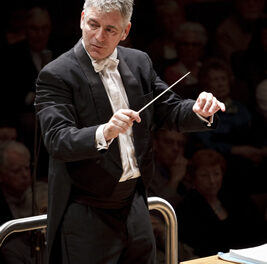Kate Steinbeck’s omnivorous musical appetite causes me hard work in two ways: (1) hours spent happily researching the obscure composers that she unearths for her Pan Harmonia concerts, and (2) additional hours figuring what to say in reviewing a passel of pieces that I have heard just once in my life. Compositions were performed at Sunday’s Altamont Theatre concert by Philippe Gaubert, Joseph Schwanter, Dana Wilson, Fikret Amirov, and Reynaldo Hahn, not exactly household names. The works featured Ms. Steinbeck on her modern Abell wooden flute, accompanied by pianist Kimberly Cann.
Philippe Gaubert’s Suite for flute and piano (1921) opened the concert. Gaubert was a pivotal figure in the modern history of flute music. He and his student Marcel Moyse paved the way for virtuosi such as James Galway and Jean Pierre Rampal to have careers as solo flutists. The first two movements of this Suite, “Danse of the Priestesses” and “Berceuse Orientale,” have an insouciance that reminded me of his contemporary Jacques Ibert, while the “Barcarolle” and “Scherzo-Valse” owe debts to Debussy, with impressionistic modes.
I didn’t have to research Joseph Schwantner. I knew him personally in Rochester, where he taught composition at Eastman School of Music and had works premiered by the Eastman Philharmonia and performed by the Rochester Philharmonic Orchestra. His major orchestral works (such as Aftertones of Infinity, New Morning for the World, and Concerto for Percussion and Orchestra) are available on disc and have penetrated the repertoires of major orchestras. His 1994 piece “Black Anemones” for flute and piano shows traces of minimalism in the piano accompaniment, but his lyrical sense dominates as the anemones flutter in the wind. Ms. Steinbeck has performed this work before, and it deserves frequent airing.
Claude Debussy’s “Syrinx” (for solo flute) was performed before the world premiere of Dana Wilson’s “And Longing to be the Singing Master of my Soul.” Flute maker Chris Abell commissioned Wilson to compose a piece “in the spirit of ‘Syrinx'”; the resulting new work is a contemplation on William Butler Yeats’ “Sailing to Byzantium.” One of the poem’s lines is paraphrased in the title of Wilson’s composition. (A better-known line is the first: “That is no country for old men.”) It is much simpler to review a performance of Rachmaninov’s “Vocalise” (which I have heard on a half dozen different solo instruments and whose score I know well) than to say something intelligent about a new work on the basis of one hearing. There is a lot of substance in this piece and I hope to hear it programmed again, soon, and perhaps even recorded by the musicians of this concert.
Five short works by Fikret Amirov opened the second half of the program. An Azerbaijani composer of the Soviet period, Amirov’s vigorous Caucasian pieces elicited frequent applause from an audience not content to wait until the end of the set. I was reminded of the Uzbek singer and lutenist Sevara Nazarkhan, who combines classical training and pop influences with traditional folk music in her “Uzbek pop” music. Tashkent is east of the Caspian Sea while Baku is west, but both are on the ancient Silk Road, and their folk music shows familial and tribal similarities. Amirov’s music is engaging. I was especially taken by the third piece of the group, entitled “Dance” and written in 6/8 time with frequent hemiolas which added a sense of mystery.
Reynaldo Hahn’s Two Pieces for Flute and Piano (1913) completed the program. This French-naturalized composer was born in Venezuela of a German-Jewish father and Venezuelan mother. His work is very creative, using impressionism and neoclassical melodies in a playful fashion.
This afternoon of obscure but satisfying music was very thoughtfully programmed and well played. I noted an audience at this “2nd Sunday @ 5″ concert that included many repeat attendees. Pan Harmonia has found a format that has popular appeal as well as great musical value.











